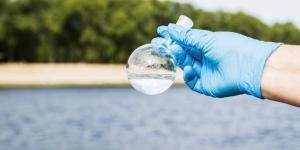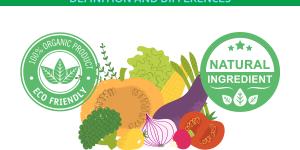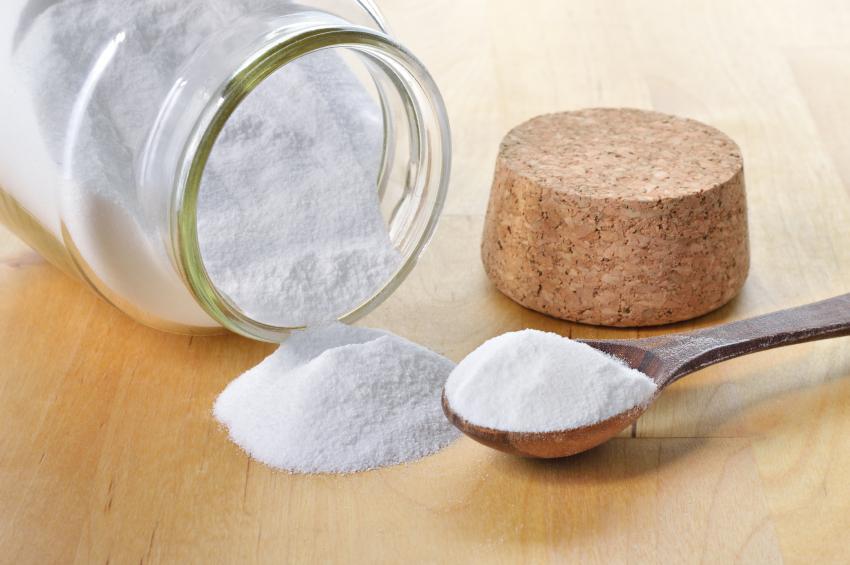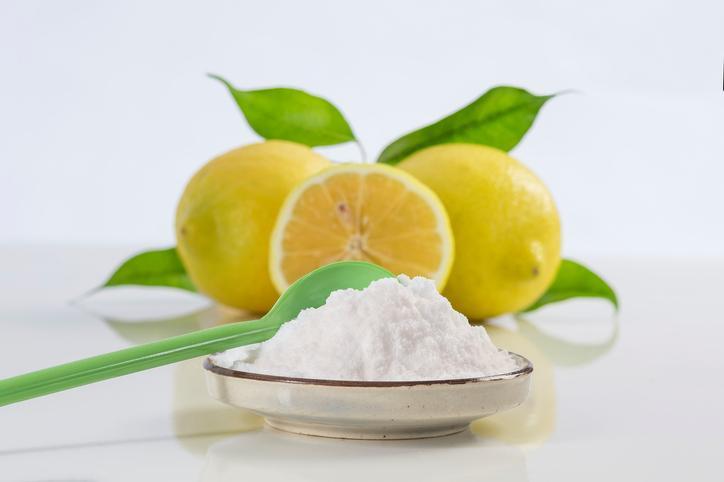How to Clean Your Bathroom Naturally

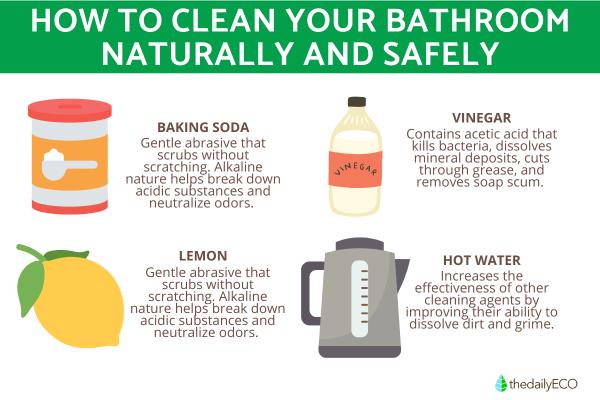
Have you ever read the warning label on your bathroom cleaner? The one that says "harmful if swallowed" or "avoid contact with skin". Commercial cleaners might get the job done, but they often contain harsh chemicals that can harm our families' health and the environment. From production to disposal, these products leave a trail of pollution that extends far beyond our bathrooms.
In this guide by thedailyECO, you'll discover how to clean your bathroom naturally. These natural alternatives not only clean effectively, but also save money and reduce environmental impact.
Why choose natural bathroom cleaners?
Before diving into specific cleaning methods, let's understand why making the switch to natural cleaners is worthwhile:
- Health benefits: conventional cleaners often contain chemicals like phthalates, triclosan, and ammonia that can irritate lungs, skin, and eyes. According to the Environmental Working Group, bathroom cleaners are among the most toxic household products.
- Environmental impact: most commercial cleaners contain phosphates, bleach, and other chemicals that contaminate waterways and harm aquatic life. Natural alternatives break down safely in the environment.
- Cost effectiveness: DIY natural cleaners typically cost 50-80% less than their commercial counterparts, saving the average household over $100 annually.
- Accessibility: all the ingredients mentioned in this guide are readily available in grocery stores, making natural cleaning accessible to everyone.
Love using natural solutions in your bathroom? The same eco-friendly approach can keep mosquitoes away without harsh chemicals! Check out our proven natural repellent strategies.
Essential natural cleaning ingredients for your bathroom
These powerhouse natural ingredients will become your new bathroom cleaning allies. Most are likely already in your kitchen:
Vinegar:
White vinegar, apple cider vinegar, or wine vinegar all work as powerful disinfectants. Vinegar has been used for cleaning throughout history because its acidity effectively kills most bacteria and viruses. It's particularly good for bringing shine to stainless steel fixtures and glass surfaces.
Baking soda:
This versatile powder works as a gentle abrasive, perfect for scrubbing away built-up grime without scratching surfaces. It also helps neutralize odors and whiten surfaces naturally. Baking soda works through both chemical reactions and physical scrubbing action.
Lemon:
The citric acid in lemons provides natural cleaning power, breaking down soap scum and hard water deposits. If you're not fond of vinegar's smell, lemon makes an excellent substitute, leaving behind a fresh, clean scent that truly makes your bathroom feel rejuvenated.

How to clean the toilet with baking soda and vinegar
The toilet often requires the most frequent cleaning in the bathroom. This simple method keeps it sparkling while being gentle on both your health and the environment.
What you'll need:
- 1 cup (8 oz) baking soda
- 2 cups (16 oz) boiling water
- 1 cup (8 oz) apple cider vinegar or white vinegar
Step-by-step cleaning process:
- Sprinkle baking soda generously around the inside of the toilet bowl, focusing on the waterline and under the rim, where mineral deposits and stains typically form.
- Let it sit for 30 minutes while you prepare the vinegar solution and clean other areas of the bathroom.
- Boil water during this waiting period.
- Add vinegar to the hot water after removing it from the heat source. The mixture will fizz slightly.
- Pour the hot vinegar solution into the toilet bowl, watching it bubble and foam as it reacts with the baking soda.
- Scrub thoroughly with a toilet brush, paying special attention to stains and the area under the rim.
- No need to flush immediately because letting the solution sit longer helps clean the pipes as well, saving water while providing extra cleaning action.
For regular maintenance, perform this cleaning once or twice weekly. For deeper cleaning of stubborn stains or mineral deposits, you may need to repeat the process or let the mixture sit longer. Keep your toilet brush fresh by storing it in a container with a vinegar-water solution.
Curious about that magical white powder you just used to clean your shower? Discover the science behind one of nature's most versatile cleaning agents in our in-depth guide.

How to clean the shower or bathtub with baking soda
Shower and bathtub surfaces are prone to soap scum, hard water stains, and mildew, especially in tile grout. This simple paste tackles these effectively.
What you'll need:
- 1 tablespoon baking soda
- 2 tablespoons water
- An old toothbrush or small cleaning brush
Step-by-step cleaning process:
- Mix baking soda and water until you create a smooth paste. The consistency should be thick enough to stick to vertical surfaces without dripping.
- Apply the paste directly to problem areas like grout lines, caulking, shower door tracks, and areas with visible stains.
- Let it sit for 10-15 minutes to allow the baking soda to work on breaking down grime and soap scum.
- Scrub gently but firmly with your brush, using circular motions on stains and back-and-forth motions along grout lines.
- Rinse thoroughly with warm water. A detachable shower head works best for this purpose.
- For stubborn mold or mildew in grout lines, apply the paste and let it sit overnight before scrubbing.
For best results, wipe down shower walls with a squeegee after each use to prevent buildup. Deep clean with this method every 2-3 weeks, depending on how frequently the shower is used.
How to clean the bathroom with lemon and baking soda
This versatile cleaner works wonderfully on sinks, countertops, tile, and most bathroom surfaces. The combination delivers cleaning power with a fresh scent.
What you'll need:
- 3 tablespoons baking soda
- 1 cup (8 oz) fresh lemon juice OR 3 tablespoons water with 20 drops lemon essential oil
- Spray bottle (for the liquid version)
- Soft cloth or sponge
Step-by-step cleaning process:
- Combine ingredients in a bowl until well mixed. For the fresh lemon version, you'll create a paste. For the essential oil version, mix in a spray bottle for a liquid cleaner.
- Apply to surfaces either by smearing the paste directly or spraying the liquid cleaner liberally.
- Let sit for 5-10 minutes to allow the natural acids to break down grime and soap residue.
- Scrub gently with a soft cloth, sponge, or brush depending on the surface and level of dirt.
- Rinse or wipe clean with a damp cloth.
- Buff dry with a clean, dry cloth for streak-free shine, especially on mirrors and chrome fixtures.
This cleaner can be used weekly for regular cleaning or as needed for spot cleaning. The fresh lemon juice version should be used immediately, while the essential oil version can be stored for up to two weeks.

How to store your natural cleaners
Proper storage is key to maintaining the effectiveness of your homemade cleaning solutions.
For vinegar-based cleaners, choose glass containers whenever possible, as the acidity in vinegar can gradually break down plastic bottles over time. Mason jars with spray tops work wonderfully for this purpose and add a charming touch to your cleaning routine.
Always take a moment to label your containers with the ingredients and date prepared. This simple step prevents confusion and helps track freshness. Store all of your natural cleaning products in cool, dark cabinets away from direct sunlight, which can degrade essential oils and reduce cleaning effectiveness.
Regarding shelf life:
- Vinegar solutions: typically remain potent for up to three months when properly stored.
- Essential oil sprays: particularly those containing water, should be used within two to three weeks to maintain their antimicrobial properties.
- Baking soda pastes: it's best to prepare baking soda pastes fresh each time you clean, as they begin to lose their abrasive quality when stored premixed with liquid.
Continue your journey toward a healthier, more sustainable home by checking out our step-by-step instructions for creating pure drinking water without plastic waste or expensive filters.
If you want to read similar articles to How to Clean Your Bathroom Naturally, we recommend you visit our Ecology (other) category.
- Carson, K. (2024, October 10). Does cleaning with baking soda really work? BBC Future. https://www.bbc.com/future/article/20241010-does-cleaning-baking-soda-really-work
- Helmenstine, A. M. (2023). The science of baking soda. American Chemical Society: Axial. https://axial.acs.org/cross-disciplinary-concepts/the-science-of-baking-soda

